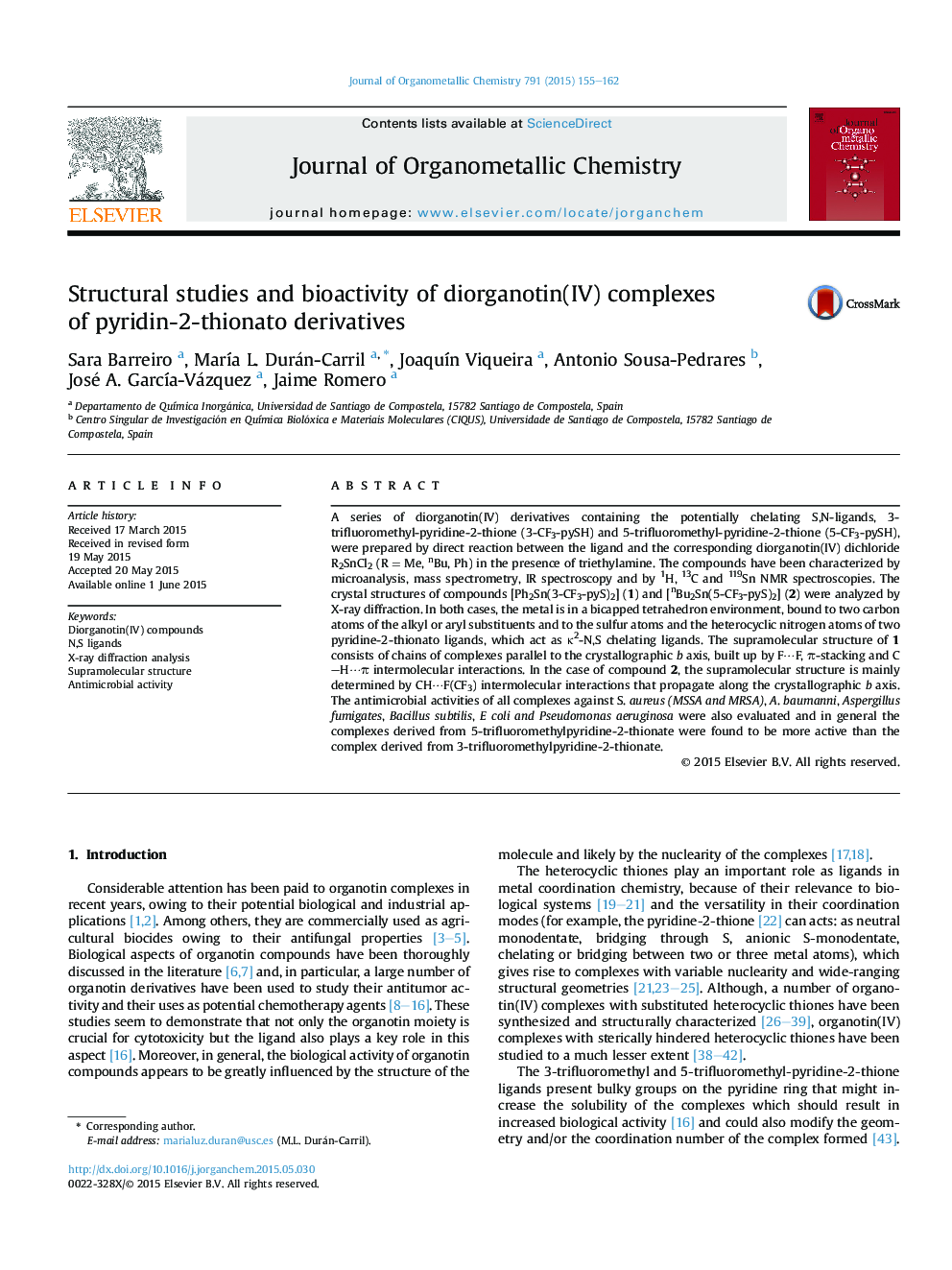| کد مقاله | کد نشریه | سال انتشار | مقاله انگلیسی | نسخه تمام متن |
|---|---|---|---|---|
| 1323212 | 1499852 | 2015 | 8 صفحه PDF | دانلود رایگان |

• Novel organotin (IV) compounds involving trifluoromethyl derivatives of pyridine-2-thione were prepared.
• The molecular structures were analyzed by different techniques and by X-ray diffraction.
• The different antimicrobial activities of the complexes seem to depend of the position of the trifluoromethyl group.
A series of diorganotin(IV) derivatives containing the potentially chelating S,N-ligands, 3-trifluoromethyl-pyridine-2-thione (3-CF3-pySH) and 5-trifluoromethyl-pyridine-2-thione (5-CF3-pySH), were prepared by direct reaction between the ligand and the corresponding diorganotin(IV) dichloride R2SnCl2 (R = Me, nBu, Ph) in the presence of triethylamine. The compounds have been characterized by microanalysis, mass spectrometry, IR spectroscopy and by 1H, 13C and 119Sn NMR spectroscopies. The crystal structures of compounds [Ph2Sn(3-CF3-pyS)2] (1) and [nBu2Sn(5-CF3-pyS)2] (2) were analyzed by X-ray diffraction. In both cases, the metal is in a bicapped tetrahedron environment, bound to two carbon atoms of the alkyl or aryl substituents and to the sulfur atoms and the heterocyclic nitrogen atoms of two pyridine-2-thionato ligands, which act as κ2-N,S chelating ligands. The supramolecular structure of 1 consists of chains of complexes parallel to the crystallographic b axis, built up by F⋯F, π-stacking and C–H⋯π intermolecular interactions. In the case of compound 2, the supramolecular structure is mainly determined by CH⋯F(CF3) intermolecular interactions that propagate along the crystallographic b axis. The antimicrobial activities of all complexes against S. aureus (MSSA and MRSA), A. baumanni, Aspergillus fumigates, Bacillus subtilis, E coli and Pseudomonas aeruginosa were also evaluated and in general the complexes derived from 5-trifluoromethylpyridine-2-thionate were found to be more active than the complex derived from 3-trifluoromethylpyridine-2-thionate.
New organotin (IV) complexes containing 3-trifluoromethyl and 5-trifluoromethyl-pyridine-2-thione as ligands were synthesized and characterized by spectroscopic methods and by X-ray diffraction. The complexes show significant antimicrobial activities. The results suggest that the activity depends on the position of the trifluoromethyl substituent on the pyridine ring.Figure optionsDownload as PowerPoint slide
Journal: Journal of Organometallic Chemistry - Volume 791, 15 August 2015, Pages 155–162